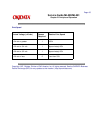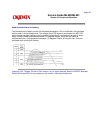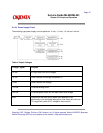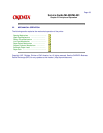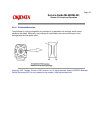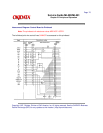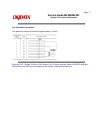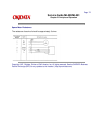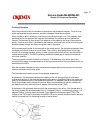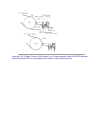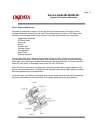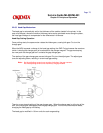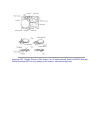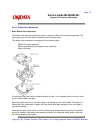
Page: 73
Service Guide ML590/ML591
Chapter 2 Principles of Operation
Printhead Operation
When the printhead is idle, the armature is attracted to the permanent magnet. The print wires,
which are attached to each armature, are then concealed inside the wire guide.
When a signal to print a character is received, current flows through a coil. The magnetic field
generated by the coil opposes the magnetic field between the armature and the permanent
magnet. The armature is then driven in the direction of the platen by the force of the armature
spring. The print wire, which is attached to the armature, protrudes from the tip of the wire guide,
strikes the paper through the ribbon and prints a dot on the paper.
As the armature gets closer to the electrode of the analog sensor, the capacitance between them
increases and a small amount of current flows. This current is amplified and sent to the logic
control LSI to indicate armature activity. In order to attain optimum drive time, this information is
transferred to the MPU. The MPU continually modifies the head gap to maintain the optimum
drive time condition.
The analog sensor element monitors all of the pins. The difference in pin stroke due to the
curvature of the platen is compensated for at the logic control section of the printhead and is not
transferred to the MPU.
After the character has been printed, the permanent magnet attracts the armature and the print
wires are retracted into the wire guide.
Two thermistors are used to monitor the printhead temperature.
A thermistor in the printhead prevents over-heating of the coil during periods of continuous
bi-directional printing. If the printhead temperature exceeds 110 degrees Celsius, the printer will
switch to unidirectional print. If the temperature exceeds 115 degrees Celsius, printing will stop.
Once the printhead cools, printing will resume. When the temperature of the coil exceeds the
pre-determined limits, the control circuit detects the thermistor signal (TSD).
A thermistor in the printhead driver monitors the temperature of the driver. If the temperature of
the driver exceeds the pre-determined limits (110 degrees Celsius - unidirectional printing / 115
degrees Celsius - printing stops) the control circuit detects the thermistor signal (TSD). The
voltage of the TSD signal is monitored at the MPU A/D port to control the pass number and print
method (unidirectional / bi-directional) at each of seven levels.



